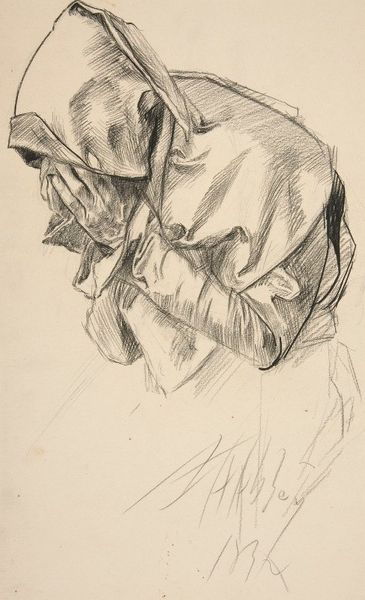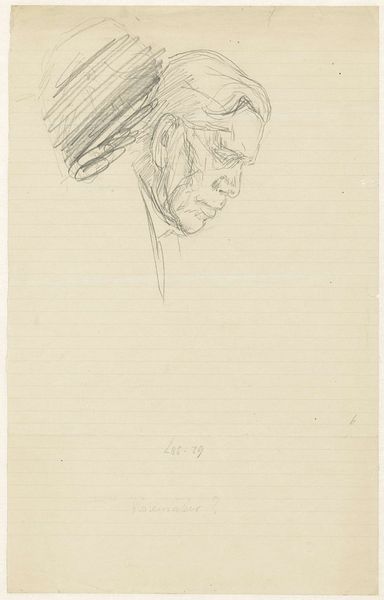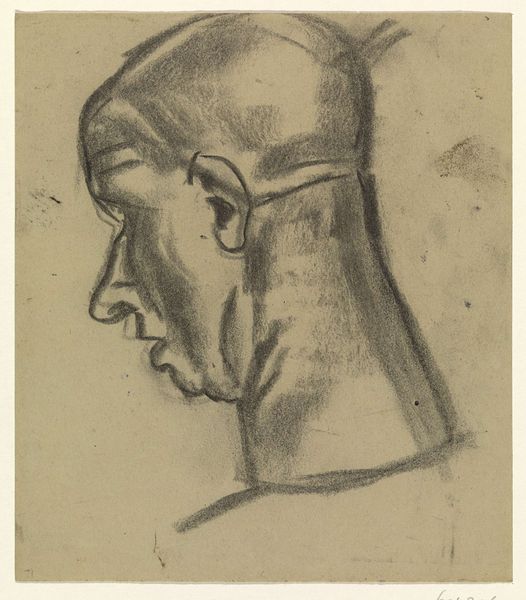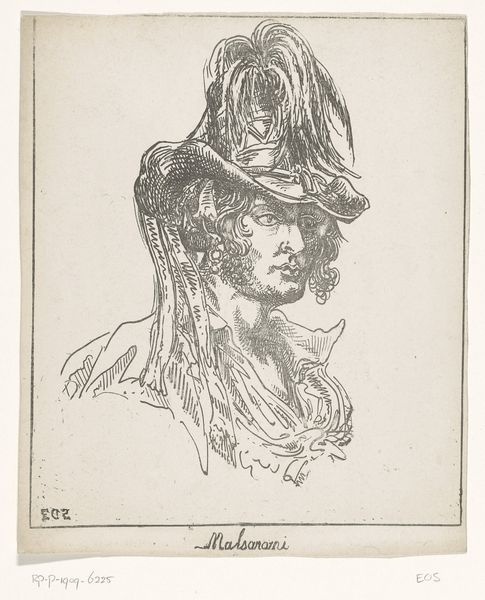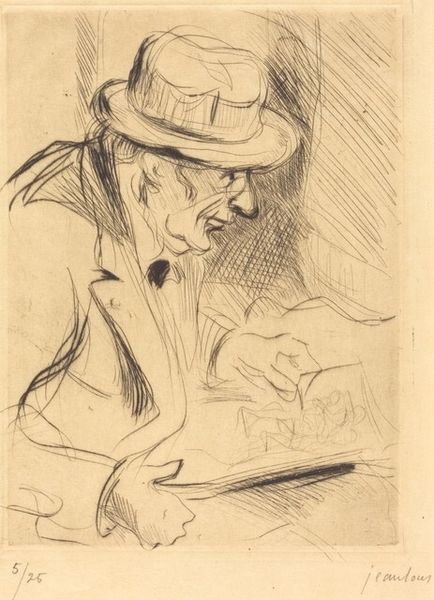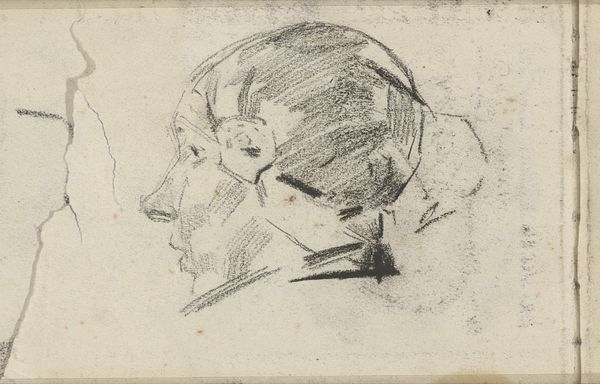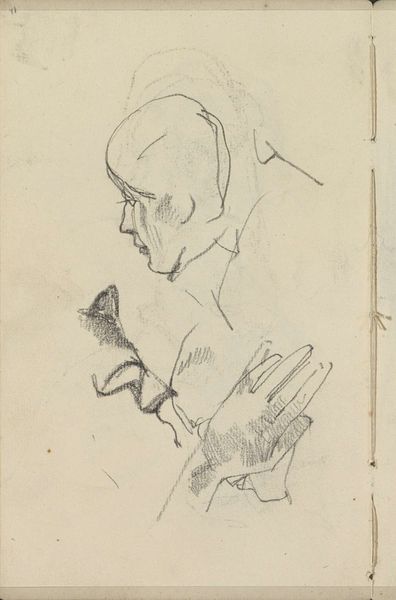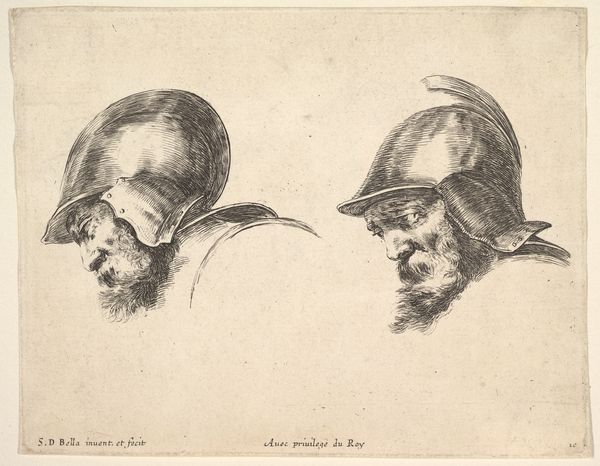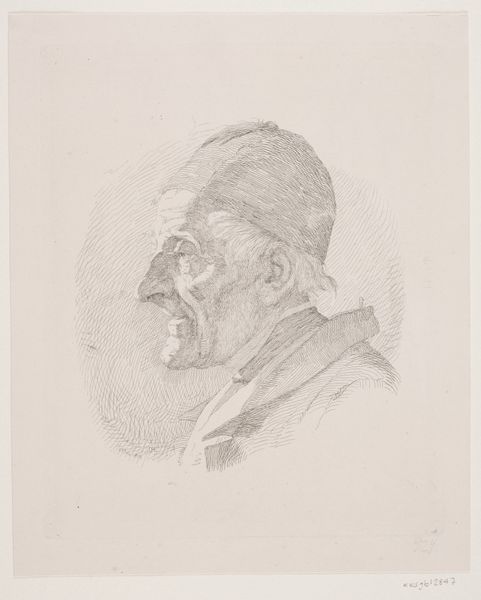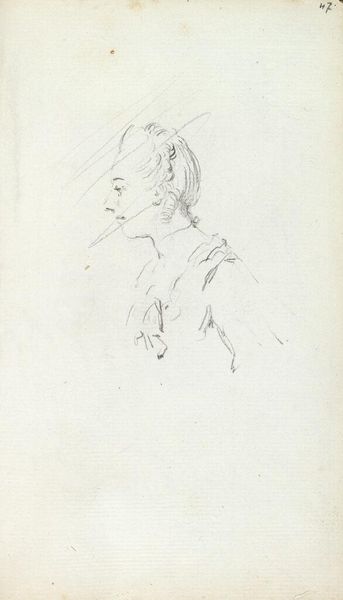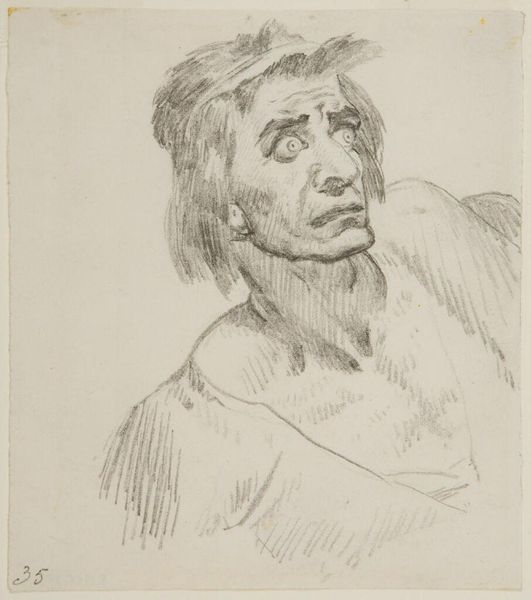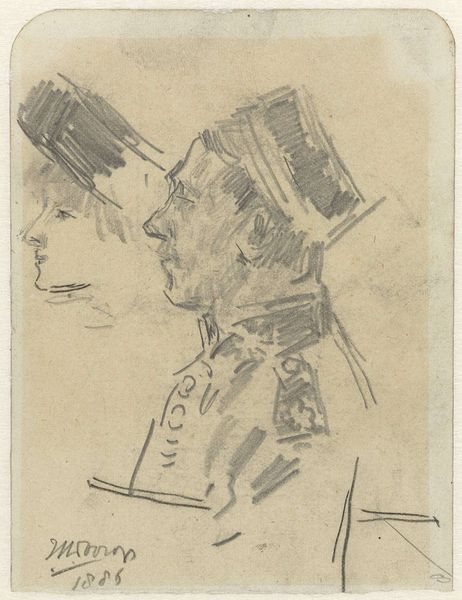
drawing, print, etching
#
portrait
#
pencil drawn
#
drawing
#
baroque
# print
#
etching
#
figuration
#
pencil drawing
#
line
#
history-painting
#
profile
Dimensions: height 120 mm, width 151 mm
Copyright: Rijks Museum: Open Domain
Editor: We're looking at Stefano della Bella's "Head of a frightened soldier wearing a helmet," etched around 1641. It's intense, the face contorted in what seems like pure terror. What historical narratives might be embedded in an image like this? Curator: Indeed. Look closer – the individual’s emotional state, rendered with such visceral intensity, invites us to question the conventional heroic narratives often associated with war and soldiers during the Baroque period. What assumptions are disrupted when we're confronted with vulnerability, even fear, in those contexts? Editor: So, instead of glorifying war, it critiques it? Curator: Perhaps. Or at least, it provides a counter-narrative. Think about the socio-political landscape of 17th-century Europe – rife with religious conflict, the Thirty Years’ War raging on. This piece might be interpreted as a poignant commentary on the psychological toll exacted upon the common soldier, whose voice is often absent from history. Could it also be an expression on toxic masculinity? Editor: I never thought about it that way; I guess art can serve as evidence of humanity beyond the battlefield. Do you see any contemporary links? Curator: Absolutely. In today's world of constant global conflict and discussions on PTSD, mental health awareness and the ongoing struggle of veterans. Images like this gain renewed resonance. This piece challenges us to see the individual, with all their anxieties and humanity, caught within systems of violence. Editor: It is relevant. Thank you! I learned to observe not only the face, but the human too. Curator: Agreed, the exploration of emotional vulnerability, especially within militarized contexts, remains profoundly important and continues to ignite critical conversation.
Comments
minneapolisinstituteofart about 2 years ago
⋮
The accomplished Florentine etcher and draftsman Stefano della Bella produced this drawing manual in France, where he spent over a decade of his career. The book, now disassembled, comprised 25 etchings and was published by della Bella’s principal French publisher Pierre Mariette. Drawing manuals were common teaching tools for artists and amateurs learning to draw in the 16th and 17th centuries. It is a kind of pattern book for the aspiring draftsmen to copy, with concise prints depicting body parts—ears, eyes, hands, feet—and a range of head studies and figure types—children, adolescents, young women, old soldiers and saints—which provide models for students seeking to master the representation of the human body.
Join the conversation
Join millions of artists and users on Artera today and experience the ultimate creative platform.
